Kefir is a probiotic‑rich fermented milk drink similar to a thin yogurt or ayran, with a yogurt‑like consistency and a light effervescence often called the “champagne of milk”. Ever since I first whisked kefir grains into cow’s milk on a rainy afternoon, I’ve been hooked by its creamy tang and bubbly charm. Drawing on that experience and the latest research on its health perks, I’ll guide you through the definition, history, types, benefits, DIY brewing, culinary uses, storage, and comparisons of this fermented treasure.
Table of Contents
What Is Kefir?
I first tried Kefir, a fermented milk beverage made by adding kefir grains, small cauliflower-like clusters of yeast cultures and beneficial bacteria to cow’s milk, goat milk, sheep milk, or buffalo milk. This fermentation process uses live and active cultures (or probiotics) to break down sugars into gases, giving a tangy, slightly carbonated, effervescent, drinkable yogurt feel with a gelatinous texture and creamy taste. It is a probiotic-rich drink that is low in lactose yet rich in protein, calcium, vitamin D, vitamins, and minerals. Traced back to the 19th century in the North Caucasus region including Russia, Tibet, and Mongolia its name comes from the Turkish word “keyif” or “kief,” meaning good feeling. Today you can find mass-produced or homemade kefir in grocery stores, health food stores, and supermarket dairy refrigerators.
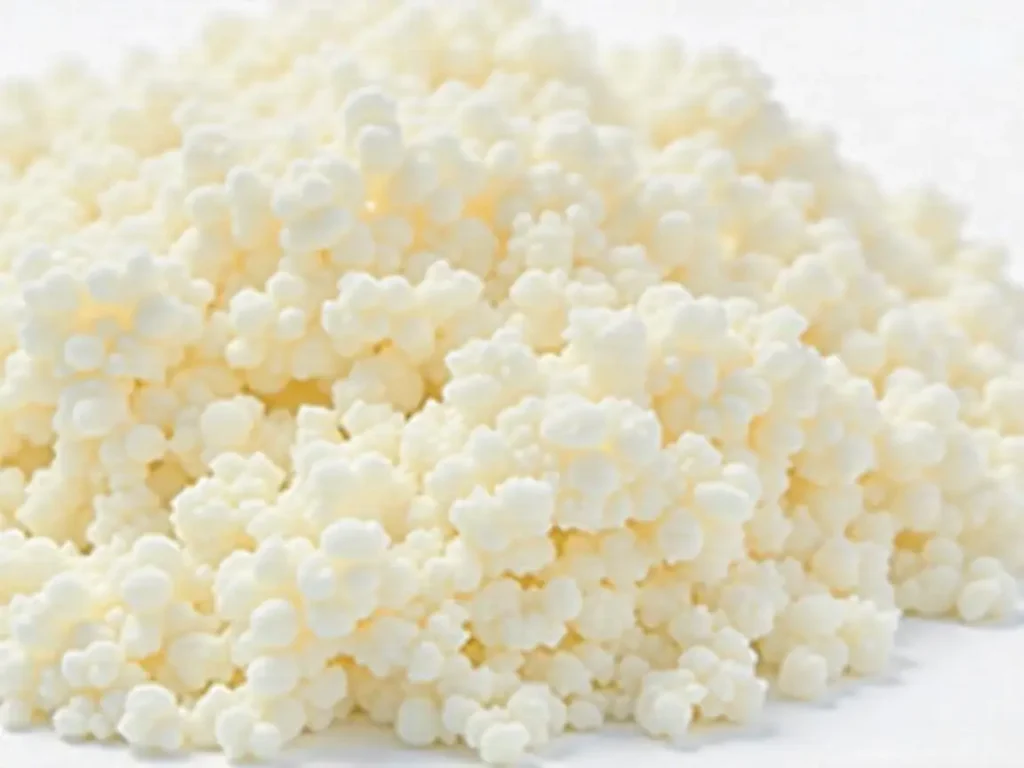
As a cultured dairy drink with a yogurt-like base, kefir hosts a symbiotic polysaccharide matrix called kefiran, offering diversity of microorganisms up to 60 unique species of probiotics like Lactobacillus acidophilus, Bifidobacterium bifidum, Lactobacillus bulgaricus, and Lactobacillus helveticus that multiply naturally without chemicals or being extracted. Scientists, the National Dairy Council, and Toby Amidor study its potential health benefits for digestive health, gut health, blood sugar control, cholesterol, weight loss, improved digestion, lower blood pressure, cancer prevention, reduced asthma, allergies, and support for immune systems, along with antibacterial, antifungal, and anti tumoural activities.
A Short History of Kefir
Spread through Eastern European countries and Russia in the late 1800s, the word “kefir” took on different names as this process gained worldwide reach. Its adoption soared as it was marketed and produced on a large scale by the 30s, and before long it had spread across the globe. What began as a family recipe was passed down through different generations, and in the late 20th century it was rediscovered globally as a health food trend. Thousands of years ago, shepherds in the Caucasus Mountains discovered Kefir grains could turn milk + kefir grains into a safe drink, with the first traces found in a 4,000 year-old tomb in China. They learned fermenting milk was an excellent way to store fresh milk and make it last longer, helping to avoid spoilage without a modern contraption like a fridge. They placed their cultures in a leather sack, hung it by the front door during daytime, and let visitors push and mix the bag for a better ferment, a true community effort.
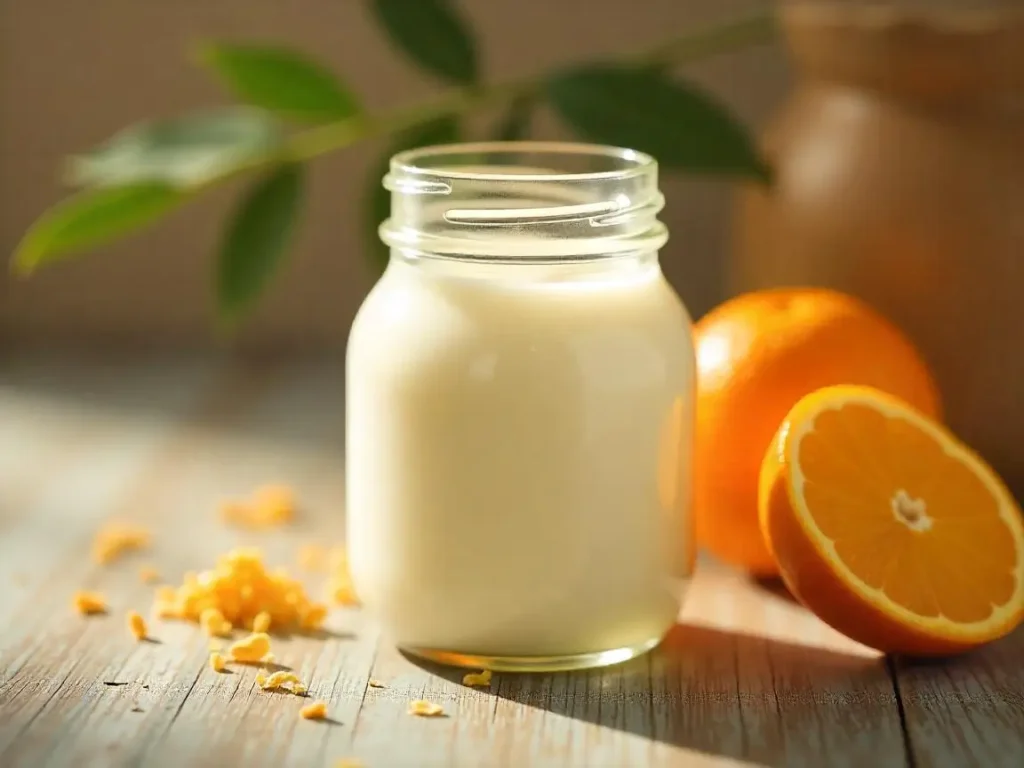
Types of Kefir
- Milk Kefir: Traditional, uses dairy kefir grains.
- Water Kefir (Tibicos): Sugar‑water fermented with water kefir grains.
- Non‑Dairy Alternatives: Coconut, oat, soy-based starters (short‑lived cultures).
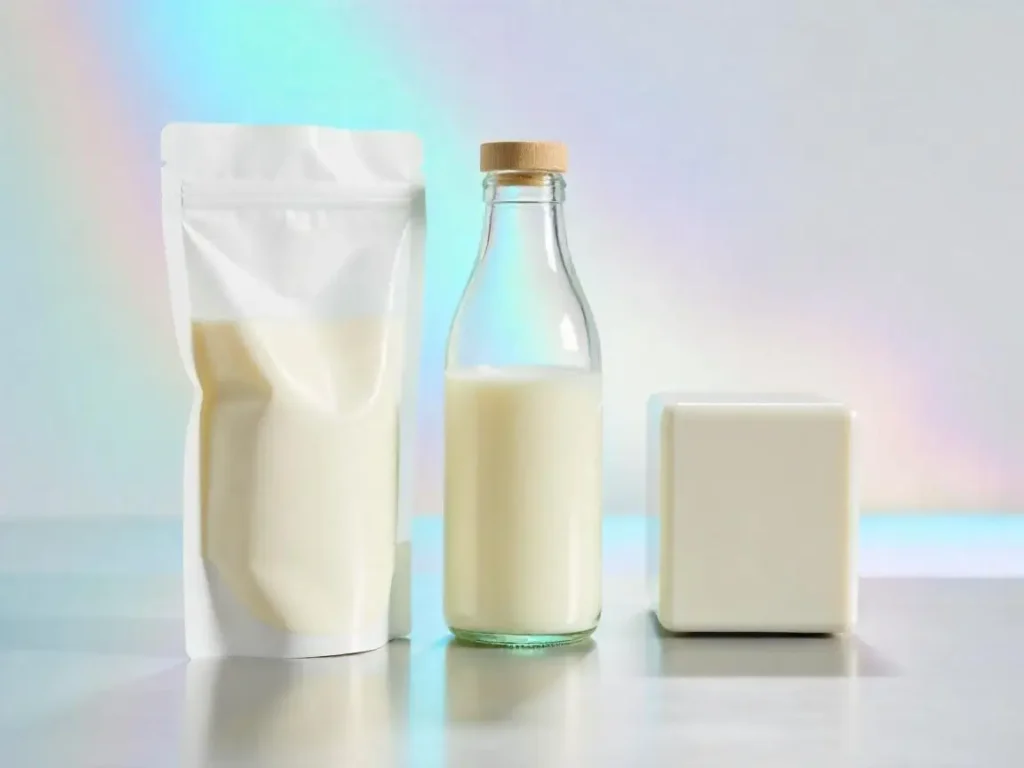
When I first ventured into making kefir at home, I was overwhelmed by the variety of options available beyond the plain whole milk kefir found in grocery store dairy sections. The most traditional form is milk kefir, made by adding kefir grains (those cauliflower-like colonies of beneficial bacteria and yeast) to animal milk – whether that’s cow’s milk, goat’s milk, or sheep’s milk. During my five years of fermentation experiments, I’ve found that using full-fat milk creates a thicker, creamier texture with robust tangy flavors. The fermentation process involves these living microorganisms actively breaking down the lactose into simpler sugars, creating a naturally carbonated drink packed with probiotics, protein (about 4 grams per serving), and essential vitamins and minerals including calcium, magnesium, and potassium.
For those seeking dairy-free options, there’s water kefir, which uses specialized water grains combined with sugar water and sometimes fruit juice to create a refreshing fermented drink without any milk. Having brewed both types for years, I can attest that while water kefir lacks the protein content of its milk-based cousin, it’s still teeming with beneficial bacteria – though with a different profile of the roughly 300 different species found in traditional milk kefir. There are also growing options for those who want the benefits of kefir without dairy – non-dairy alternatives made with coconut milk or oat milk are becoming more popular, though these typically contain fewer probiotic microorganisms than traditional versions. Unlike live yogurts which contain a handful of bacterial strains, true kefir offers a much more diverse range of microbes, making it significantly more powerful for supporting gut health and digestive health.
What Makes Milk Kefir So Special?
When I first discovered milk kefir, I was amazed by how unique it is compared to other fermented milk drinks. The magic starts with kefir “grains”, which are actually not true grains but rather symbiotic colonies of bacteria and yeast. These grains have a protein and lipid matrix that makes them resemble pieces of cauliflower. When you add them to milk, they ferment it by breaking down lactose into lactic acid and other beneficial components. This process is what gives kefir its tangy taste and makes it widely known and consumed in many countries throughout the world.

What fascinates me most is the rich history of kefir. For many centuries, it was a closely-guarded secret in the Northern Caucasus region of Russia, where people are renowned for their longevity and have some of the highest proportions of centenarians. Kefir was a dietary staple, traditionally made by adding fresh milk to kefir grains in goatskin bags. These bags were hung in doorways or left in the sunshine during the daytime, and every person who passed by would prod or push the bag to keep the grains mixing. As the kefir was consumed, more fresh milk was added, creating a continuous fermentation cycle that kept the tradition alive.
Nutritional Goodness in Every Sip
When I first added kefir to my daily routine, I was amazed not just by its creamy taste, but how full it made me feel with just one cup. A low-fat kefir drink contains about 104 calories, 9 grams of protein, 2.5 grams of fat, and 11.5 grams of carbohydrates. It has 0 grams of fiber but about 11 grams of sugar. It’s a good source of vitamin B12, calcium, vitamin K, riboflavin, folate, and phosphorus. The nutritional value of kefir makes it a smart and filling choice especially for those looking for a protein-rich breakfast or snack that’s also light on fat.

The richness in probiotic microbes supports overall health, but the exact nutrition can vary widely depending on the ingredients and fermentation technique used. A 2017 paper estimates that traditional milk kefir is made of about 90% water, 6% natural sugars, 3.5% fat, and 3% protein, along with a solid number of vitamins and minerals, including B vitamins, vitamin C, vitamin A, magnesium, potassium, and calcium. Each sip packs a punch, not just in flavor but in nourishment too.
Health Benefits of Kefir
Following are the health benefits of kefir:
Promotes gut health and regularity
As a long-time kefir enthusiast, I’ve experienced firsthand how adding this fermented food to my daily diet transformed my digestive health. The secret lies in its rich probiotic content – those beneficial bacteria that support a healthy gut microbiome. Unlike regular yogurt, kefir contains more diverse bacteria and yeast strains working together during the fermentation process. These live cultures help repopulate your digestive tract with good bugs that aid digestion and fight harmful bacteria like E. coli and salmonella. According to Lisa Richards, nutritionist and author of The Candida Diet, “Kefir’s ability to introduce healthy bacteria into the microbiome makes it superior to many other probiotic foods.” I’ve found that consuming kefir at room temperature enhances its digestibility and maximizes the benefits of active cultures like S. Thermophilus and L. Bulgaricus.
May improve lactose tolerance via residual lactase activity
What makes kefir particularly valuable for those with lactose intolerance is that during fermentation, the microorganisms in kefir grains produce beta-galactosidase, an enzyme that breaks down milk sugars. This means that while regular milk might cause gas, bloating, and diarrhea for some people, fermented milk products like kefir are often better tolerated. One fascinating study showed that kefir can reduce lactose content by up to 30% through the natural action of these enzymes. Tricia Best, a registered dietician, explains that this makes kefir “a drinkable alternative for those who normally avoid dairy products for health reasons.” I’ve recommended kefir to numerous friends with digestive issues who were amazed they could enjoy this dairy product without discomfort.
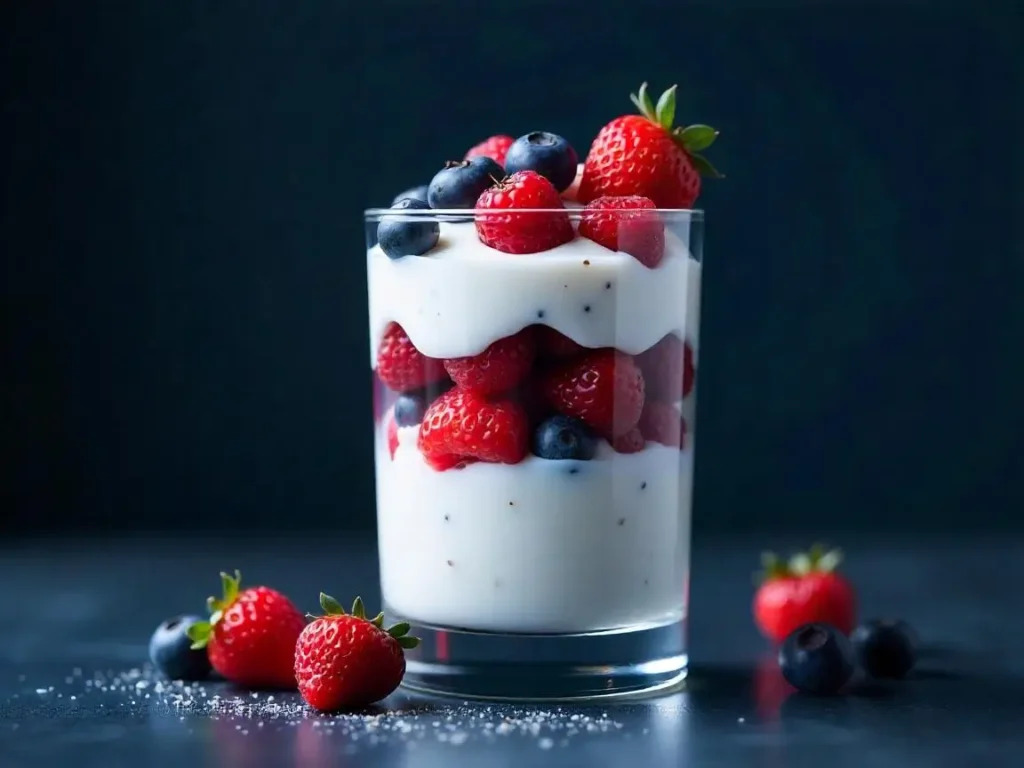
Supports immune function and reduces inflammation
The relationship between gut health and immune function is now well established by science. Kefir’s probiotic properties strengthen your body’s natural defenses by supporting proper immune function and helping regulate immune responses. Laboratory studies and animal studies have shown that compounds in kefir can reduce inflammation, which is linked to numerous conditions including heart disease, arthritis, and type 2 diabetes. The sugar molecule called kefiran found in kefir grains appears to have powerful antibacterial properties and immune boosting benefits. When I battled a persistent case of H. pylori (bacteria linked to ulcers and gastrointestinal diseases) after a round of antibiotics disrupted my gut balance, incorporating organic, grass-fed kefir was a game-changer for my overall health and energy.
Potential roles in bone health, cholesterol management, and glycemic control
Beyond digestive benefits, kefir offers impressive advantages for many organ systems and body systems. Its rich nutrient profile includes calcium, vitamin D, phosphorus, and magnesium – all essential for bone health and preventing osteoporosis by improving bone mineral density. My grandmother, who incorporated kefir into her diet for decades, maintained strong bones and teeth well into her 90s. Research also suggests that kefir may help lower cholesterol levels, specifically LDL cholesterol, and reduce triglycerides and blood pressure, potentially decreasing risk of cardiac events. For those concerned about diabetes, multiple studies with participants with prediabetes or type 2 diabetes have shown promising results for blood sugar control. One small study had people drink 600 ml of kefir daily for 8 weeks, resulting in improved fasting blood sugar and reduced insulin resistance compared to the control group. Another study with 58 women who were overweight found that consuming two servings of kefir daily while following a weight-maintenance diet led to improvements in body mass index and waist measurements compared to those consuming skim milk or other low-fat dairy products.
Additional nutrient benefits for whole-body wellness
Beyond the major benefits already mentioned, kefir is packed with essential vitamins and minerals that contribute to numerous aspects of health. It’s an excellent source of B vitamins including B2 (Riboflavin) and B12, which support energy production and brain function. The calcium in kefir works with vitamin K for calcium absorption and maintaining healthy nerves and muscles. Potassium aids in blood pressure regulation, while vitamin A supports vision and skin health. Lactobacillus kefiri, one of the unique bacterial strains found almost exclusively in kefir, has been shown to inhibit growth of several harmful pathogens. According to Amidor, when shopping for kefir, it’s important to check the ingredient list and look for products with the highest number of live organisms to maximize health benefits. The improved nutritional quality and extended shelf life of kefir compared to regular milk makes it a versatile addition to any diet. My personal experience with kefir has shown me it’s not just about addressing specific health concerns, it’s truly a whole-body wellness food that supports cognitive health and vitality through better nutrient absorption.
Risks and Considerations
While kefir offers impressive health benefits, I’ve learned through years of making and consuming it that it’s not without potential concerns. When I first started drinking milk kefir, I experienced temporary digestive issues like bloating and mild diarrhea for a few days until my body adjusted to the powerful probiotics. This is actually quite common with fermented foods – the probiotic effects can initially cause increased gas as your gut microbiome adapts. I recommend starting with a small amount (about a quarter cup) and gradually increasing as your system acclimates. For those who are lactose intolerant, good news – the fermentation process breaks down most of the lactose, allowing many to enjoy dairy products without symptoms, though you should first consume a tiny portion to test your reaction.
Something few people realize is that kefir naturally contains a small amount of alcohol (typically between 0.2% and 0.5%) as a byproduct of fermentation. While this is negligible for most people (commercial varieties in the store contain around 2% alcohol or less), those who completely abstain from alcohol should be aware. Similarly, those with diabetes should opt for plain varieties rather than flavored options with added sugar or those made with fruit juice (fruit juice kefir), as these can significantly increase the sugar content. Always read the label carefully, especially for commercially produced varieties that might contain unexpected additives or higher sugar levels than homemade versions.
For individuals with serious health concerns like immune deficiency or those scheduled for surgery, consult your doctor before adding kefir to your diet, as there is little research from any Trusted Source on its safety in these specific conditions. Those with true milk allergies (not just lactose intolerance) should completely avoid dairy-based kefir due to the potential risks of allergic reactions, but can still safely enjoy non-dairy forms like water kefir or kefir made with non-dairy milk alternatives. When you make kefir at home, maintaining impeccably clean equipment is essential to minimize any risk of infection from unwanted bacteria. Despite these cautions, kefir is generally safe for most people – just remember to start slowly and avoid drinking too much until you know how your body responds.
Kefir as Traditional Medicine
Long before kefir became a rapidly growing health trend in the global market, it served as a powerful folk remedy throughout Eastern Europe. As early as the 1930’s, the Blandov brothers recognized the medicinal value of milk kefir and developed a commercial process for making a consistent commercial product. This innovation came after centuries of people using milk kefir grains to make their own milk kefir at home to treat various ailments. What amazed me when researching kefir’s history was discovering how the All Russian Physicians’ Society documented its effectiveness for digestive disorders, tuberculosis, and even artherosclerosis. By the 1960’s, Russian hospitals had embraced kefir as a genuine superfood, regularly giving it to hospital patients and infants to strengthen their immune systems, while some physicians even recommended it for cancer patients.

Today’s commercially-prepared kefir often relies on direct-set powdered kefir cultures rather than traditional kefir grains, which helps manufacturers create large scale production for the market. When I visited a kefir producer last year, they explained how they’ve perfected methods to ensure their product remains enriched with beneficial bacteria while meeting modern food safety standards. Despite these industrial adaptations, kefir continues to attract health-conscious consumers looking for natural remedies for gastrointestinal issues, skin problems, and infections. The traditional wisdom behind kefir has inspired numerous modern studies exploring its antimicrobial and anti-inflammatory properties. However, I always remind friends with true dairy allergies that while traditional milk kefir offers tremendous benefits, they should opt for water or non-dairy alternatives instead, and everyone should ensure they use clean equipment to prevent contamination when making kefir at home.
What Does Kefir Taste Like?
When I first tried kefir, my taste buds were caught off guard by its distinctive sour flavor – imagine a yogurt that’s gone rogue with a fermented taste that’s much more complex! This ancient drink offers a perfectly balanced tangy, slightly tart profile with subtle hints of yeastiness and a gentle fizz from natural carbonation. Unlike a thick smoothie, true kefir has a wonderful pourable consistency that coats your tongue without being heavy – though you might notice small curds or whey pockets forming as it ages. After drinking it regularly, I’ve found the differences in taste can be quite dramatic depending on fermentation time, temperature, and whether you’re using cow, goat, or sheep milk as your base. The longer those beneficial probiotic bugs feast and multiply, the stronger the sour notes become, which actually makes it incredible for cooking when you want that acidic tang! Most newcomers to kefir find it takes a few tries to appreciate fully, but once your gut adjusts to this powerful fermented drink, many people (myself included) actually crave its complex flavors.
How to Make Kefir at Home?
Equipment Needed
In my kitchen, I set up a clean environment with the right equipment to keep unwanted bacteria out of the liquid. I wash hands with soap and water, then sterilize the glass jar by rinsing with hot water and air‑drying on a drying rack. I gather active kefir grains, a paper coffee filter or cheesecloth, a rubber band, a silicone spatula, a wooden spoon, and a non‑metal mesh strainer.
Choosing Milk
I’ve tested cow’s milk, goat’s milk, and even coconut milk for kefir, noting that active kefir grains thrive best in dairy; for non‑dairy options, grains weaken on non‑dairy, so I stick to pasteurized dairy for reliable batches.
Fermentation
I measure one teaspoon of grains for every cup of milk, leaving space at the top of the jar so it can ferment. I cover it with the filter secured by the band, then place it in a warm place around 70°F (21°C) for 12–48 hours, keeping it away from direct sunlight.
Readiness Cues
I look for a sour drink that’s slightly thickened and see the whey separate. When the aroma turns tangy and the texture feels right, I know it’s ready.
Tips
After straining with a mesh strainer, I pour the kefir into a sterile storage container and chill in the refrigerator for up to a week. A shorter fermentation gives a sweeter kefir, while a longer fermentation yields a sour drink with more bite. I always save the grains for the next batch to keep the cycle going.
How to Use Kefir in Your Diet?
Drinking
Try Drinking kefir Plain in a glass, or mixed with a splash of milk for a milder flavor, which is a simple way for people to use its live cultures. You can enjoy it chilled or iced, adding fruit, honey, or spices, or pour it over cereal, muesli, oats, or yogurt for a quick breakfast.
Smoothies & Bowls
Smoothies & Bowls let you Blend kefir with fruits, greens, and superfoods for a quick meal. You can use it as a Base for cold soups, or treat these smoothies goods, eating them in the same chilled glass you might use for drinking kefir.
Cooking & Baking
Cooking and Baking with kefir is a clever Substitute for buttermilk in pancakes, waffles, and muffins. I’ve tried baked goods where kefir adds moisture and tang. Just mind your heating: too much heat can deactivate the live cultures, so pouring batter gently and using moderate temperatures works best.
Dressings & Dips
Dressings & Dips give kefir a creamy twist. Use it as a Base for creamy salad dressings, tzatziki, or ranch-style dips. I love adding it to greens and pouring it over my salad; this is a simple way to enjoy kefir beyond drinking, making every meal more flavorful.
Serving Size: How Much Kefir Should You Drink?
Based on my experience and expert advice, aim for 1–3 cups (237–710 mL) of kefir daily, but I recommend you Start low with ½ cup to assess tolerance and then increase as desired as your gut adapts to the probiotic boost.
Kefir vs. Yogurt vs. Buttermilk vs. Kombucha
Kefir, yogurt, buttermilk, and kombucha are all popular fermented foods, but they have unique properties and nutritional profiles. While kefir is made by fermenting milk with a mix of bacteria and yeast, yogurt relies only on specific types of bacteria, making their live cultures slightly different. On the other hand, buttermilk, a thin liquid often used in baking, is a byproduct of butter churning and contains fewer probiotics. Lastly, kombucha, which is made from tea, is a non-dairy option that combines yeast and bacteria for fermentation. These variations in fermentation processes lead to differences in flavor, texture, and health benefits.
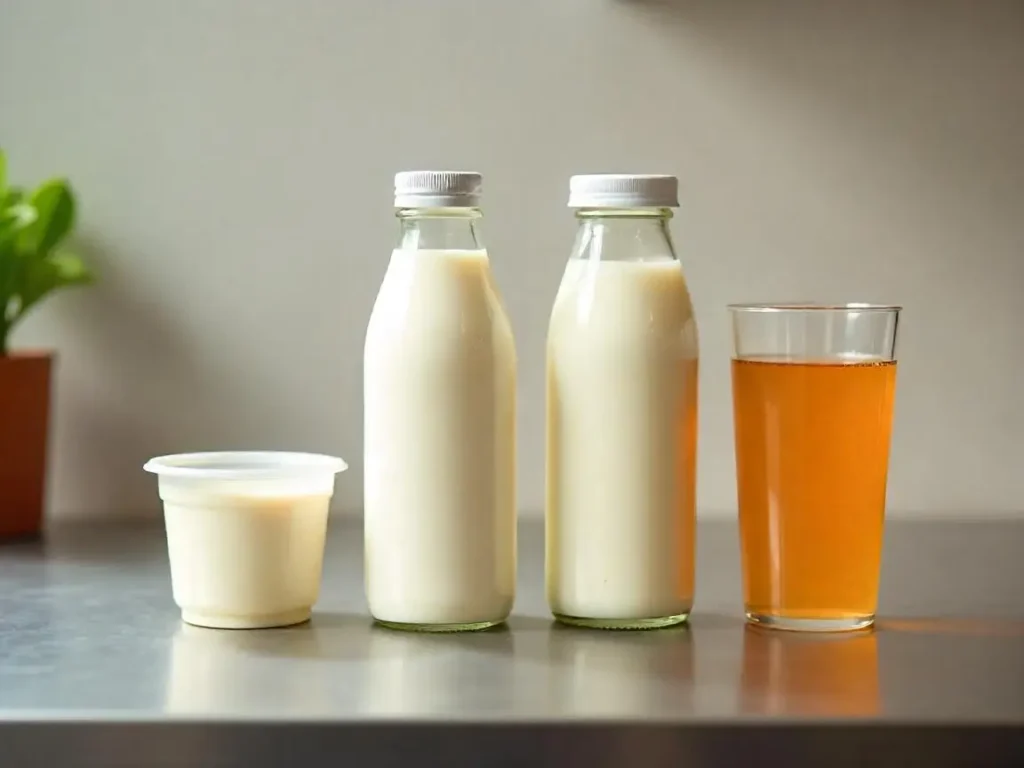
In terms of consistency and taste, kefir is thinner, fizzy, and more pourable compared to the thicker texture of yogurt, which has a creamy feel. Meanwhile, traditional cultured buttermilk is even thinner than kefir and has a mild tanginess but lacks the same probiotic diversity. Kombucha, being tea-based, offers a tart and effervescent experience that’s completely different from these dairy-based products. The flavor of each product also depends on the type of milk used (for dairy options) or the ingredients in the case of non-dairy-free alternatives like kombucha.
When it comes to probiotics, kefir stands out with its higher number of live, active cultures compared to other fermented foods. It typically contains more strains of beneficial bacteria and yeast than both yogurt and cultured buttermilk, making it an excellent choice for people who want to improve gut health. While kombucha also provides probiotics, its diversity doesn’t match that of kefir. Whether you’re lactose-intolerant or looking for a specific type of fermented drink or ingredient for recipes, exploring these products can help you find what works best for your taste and nutritional needs.
Conclusion
Kefir is a fermented dairy drink with a rich history, starting in the Caucasus Mountains and now enjoyed worldwide for its creamy, tangy flavor and impressive health benefits1. Packed with beneficial bacteria, protein, and essential nutrients, kefir supports gut health, digestion, and even bone strength, making it a versatile addition to any diet1. After years of making my own kefir at home, I’ve found it not only easy to prepare but also fun to experiment with in smoothies, salad dressings, and even baking. If you’re curious, try making DIY kefir just a jar, some grains, and your favorite milk are all you need. Don’t forget to subscribe for more guides on fermented dairy, share your own kefir stories, and drop your questions in the comments!
FAQs
Is kefir lactose-free?
Kefir is low in lactose because the fermentation process breaks down most of the milk sugar, so many people who are lactose intolerant can digest it comfortably.
Can you make kefir with non-dairy milks?
Yes, you can use coconut, oat, or soy milk, but the probiotic content and flavor will be a bit different from traditional dairy kefir.
Which milk yields the best kefir?
Full-fat cow’s milk usually gives the creamiest, thickest kefir, but goat and sheep milk also work well and offer unique flavors.
How do you know when it’s ready?
Kefir is ready when it thickens and has a tangy, slightly sour taste usually after 24 hours at room temperature.
What equipment do I need?
All you need is a clean glass jar, a plastic or wooden spoon, a breathable cloth or paper towel, and a strainer for the grains.
How to troubleshoot off-flavors or thin kefir?
If your kefir tastes off or is too thin, try fermenting it a bit longer, using fresher grains, or switching to a different milk. Clean equipment and the right temperature (around 68–75°F) also help ensure the best results.

Hi, I’m Natalia Smith, a kefir enthusiast and content writer dedicated to making fermented dairy approachable and enjoyable. My journey with kefir began in my own kitchen, experimenting with recipes and sharing the health benefits I discovered. Through hands-on experience and continuous learning, I aim to provide clear, trustworthy information that helps others embrace the goodness of kefir in their daily lives.
